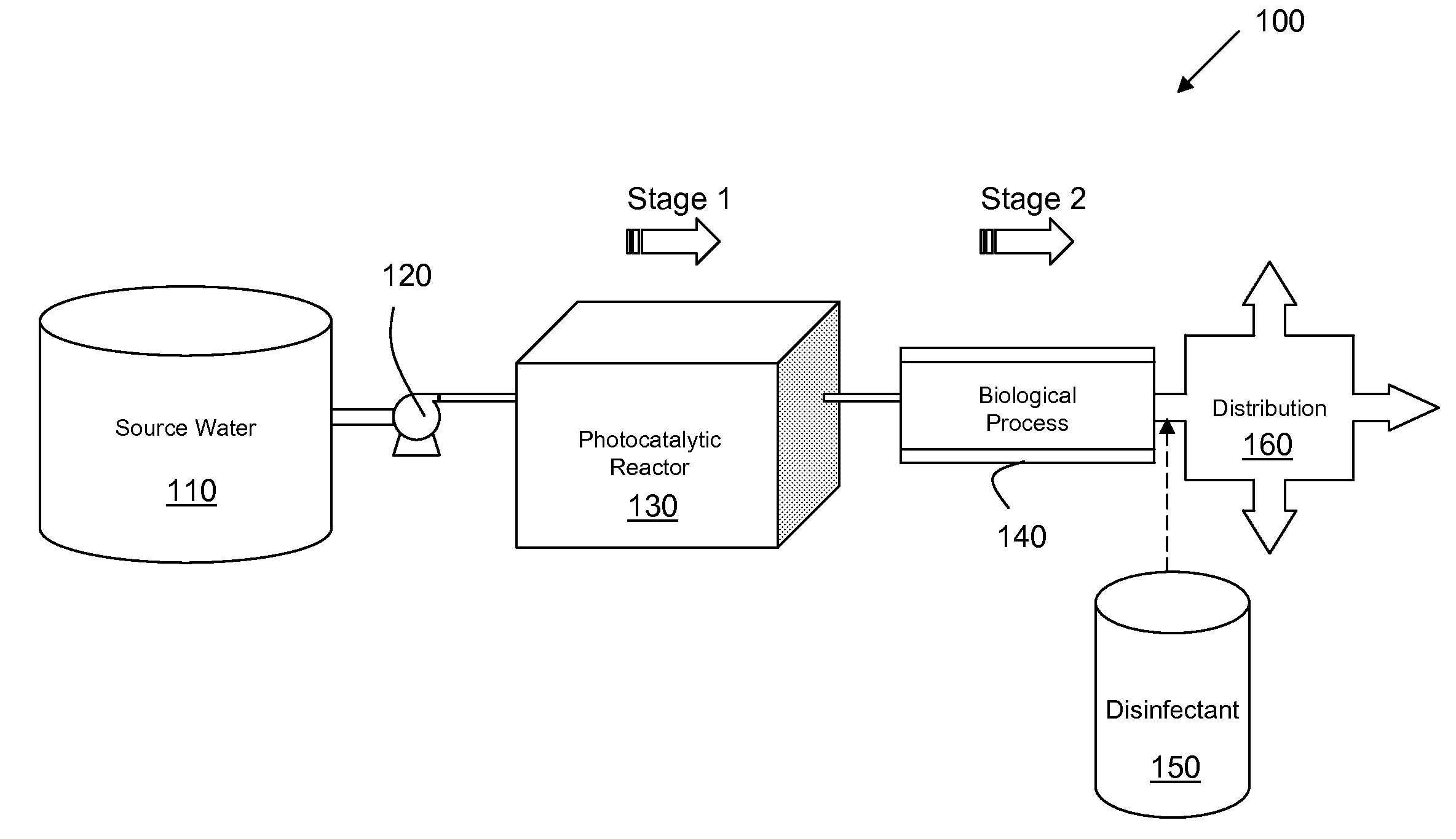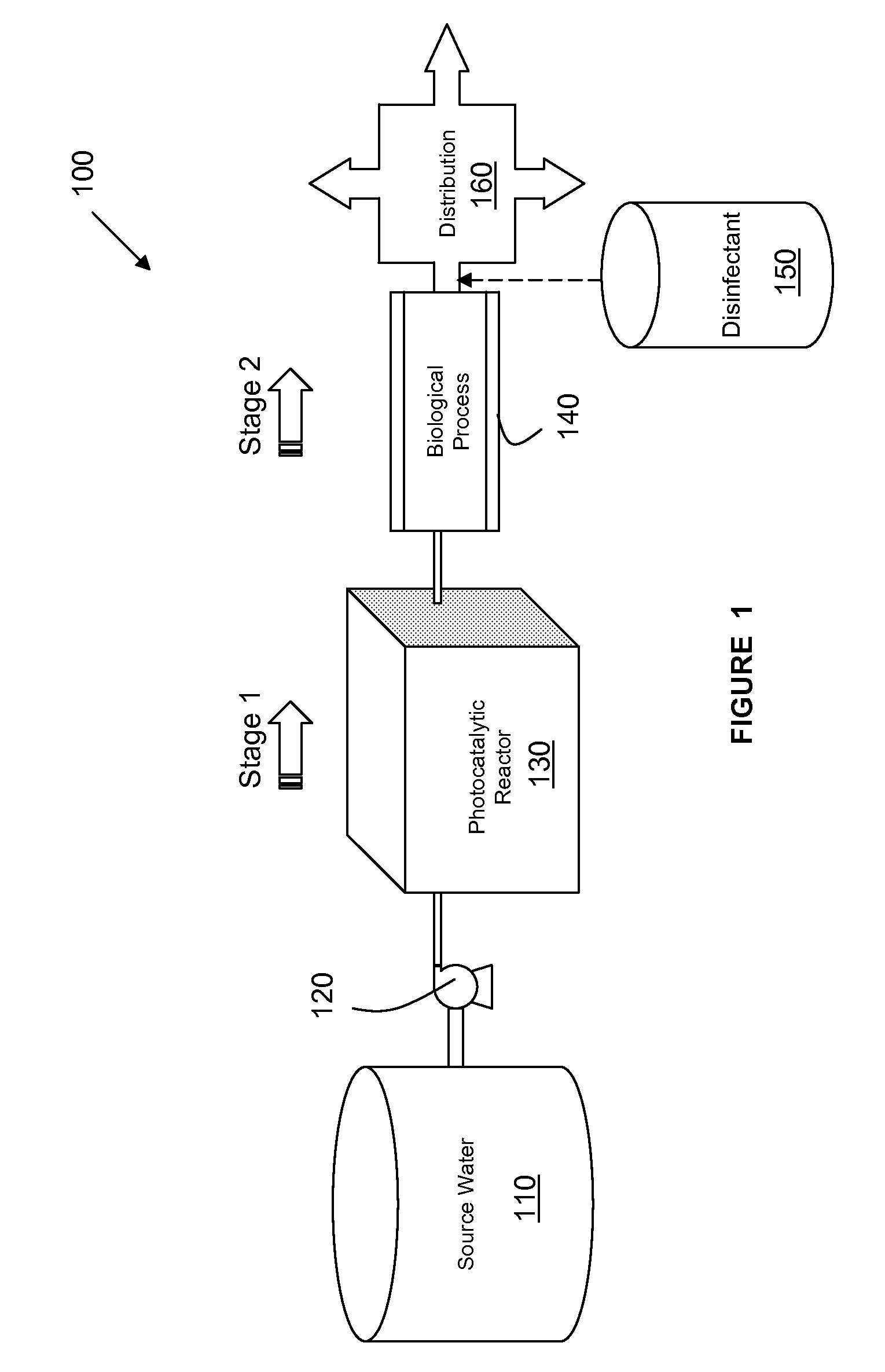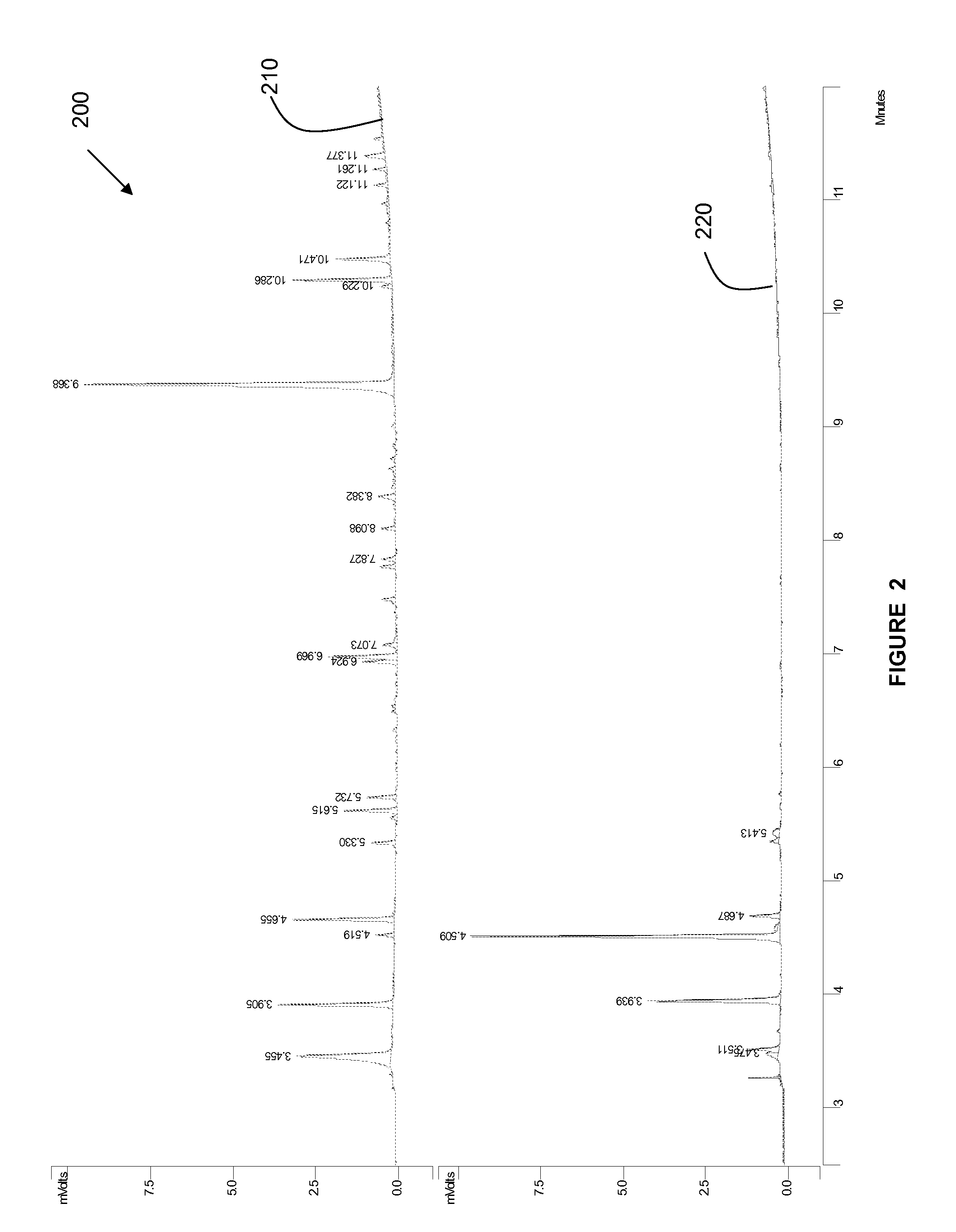Water Treatment Process for the Reduction of THM & HAA Formation
- Summary
- Abstract
- Description
- Claims
- Application Information
AI Technical Summary
Benefits of technology
Problems solved by technology
Method used
Image
Examples
Embodiment Construction
[0013]A system or process constructed and implemented according to the principles disclosed herein integrates the chemical-free oxidation of a photocatalytic decontamination process with a biological decontamination system to eliminate the THM and HAA precursors in drinking water. FIG. 1 illustrates a block diagram of one embodiment of a decontamination system 100 constructed in accordance with the disclosed principles.
[0014]As illustrated, the source water 110 to be decontaminated is provided into the system 100, for example, via a pump 120. The source water 110 may be groundwater or surface water, or other similar water to be decontaminated. In addition, the source water 110 may have some type of pretreatment (not illustrated) applied to it before being introduced into the present system 100. Such a pretreatment may include a coagulation / sedimentation process, such as those found in conventional approaches.
[0015]The photocatalytic decontamination process, such as the type disclose...
PUM
| Property | Measurement | Unit |
|---|---|---|
| Molecular weight | aaaaa | aaaaa |
| Level | aaaaa | aaaaa |
| Biodegradability | aaaaa | aaaaa |
Abstract
Description
Claims
Application Information
 Login to View More
Login to View More - R&D
- Intellectual Property
- Life Sciences
- Materials
- Tech Scout
- Unparalleled Data Quality
- Higher Quality Content
- 60% Fewer Hallucinations
Browse by: Latest US Patents, China's latest patents, Technical Efficacy Thesaurus, Application Domain, Technology Topic, Popular Technical Reports.
© 2025 PatSnap. All rights reserved.Legal|Privacy policy|Modern Slavery Act Transparency Statement|Sitemap|About US| Contact US: help@patsnap.com



